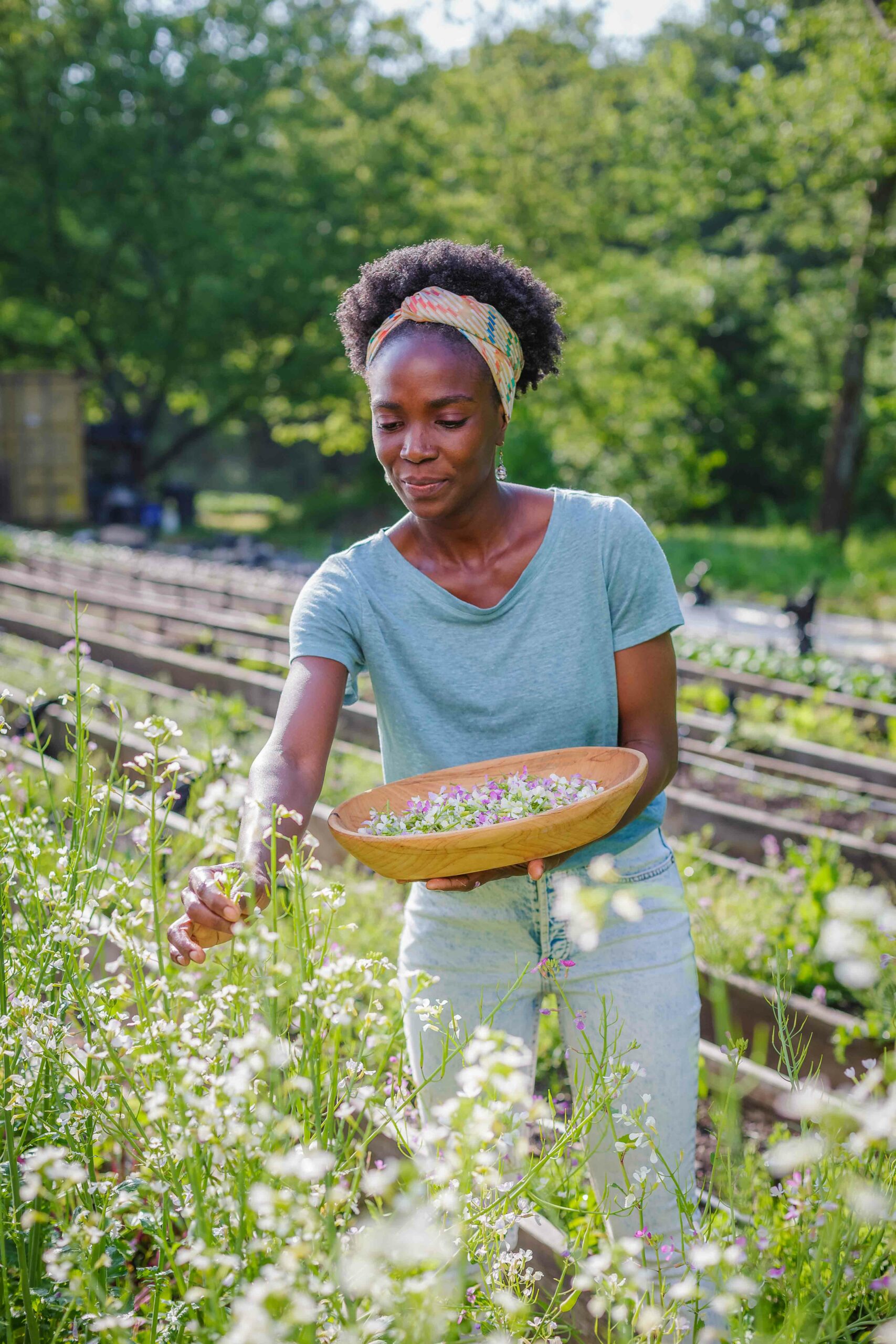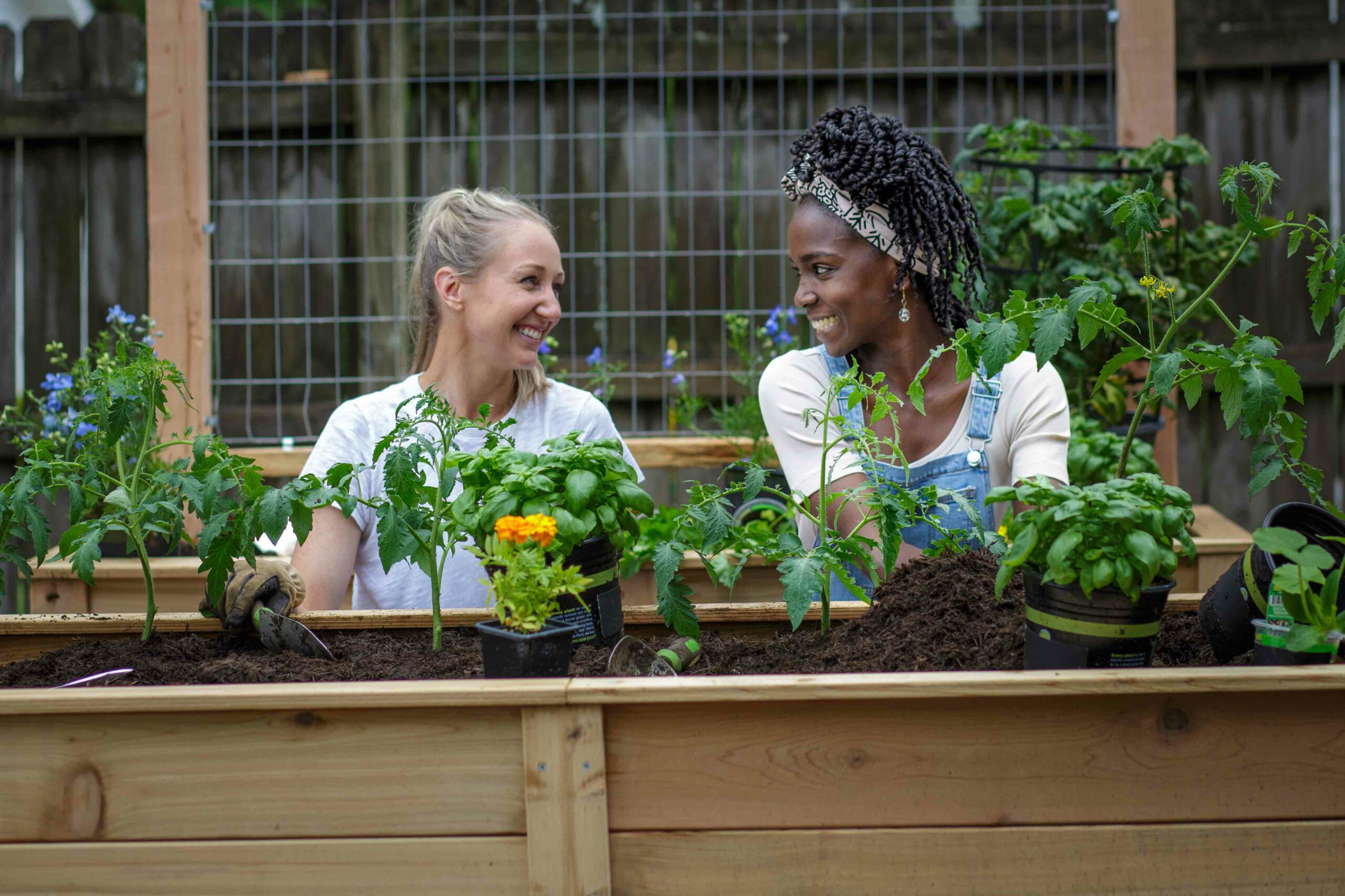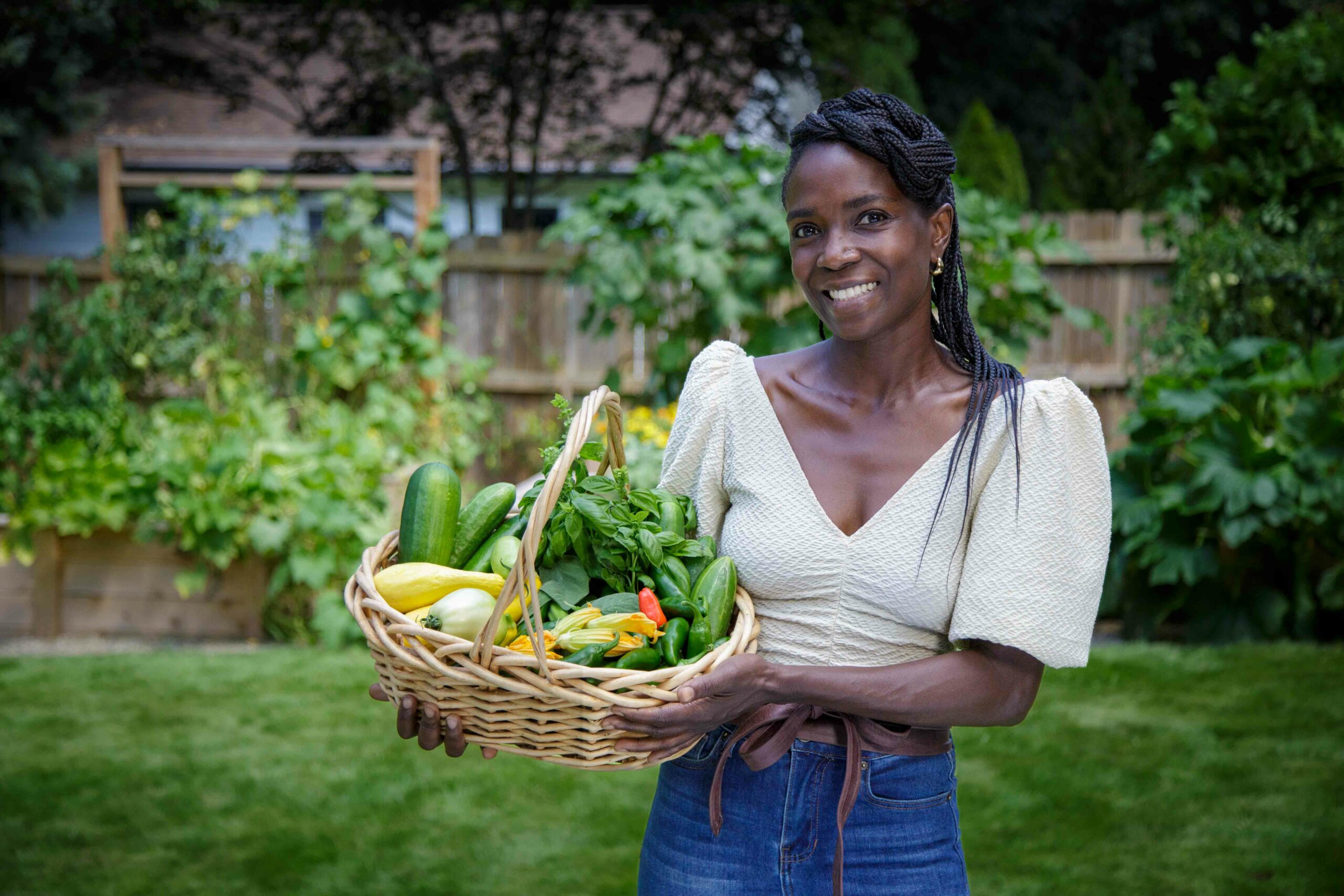BY Anni Bacchus
Season four of Magnolia Network's hit series Homegrown premiered on April 6th, 2024!
The unscripted backyard makeover show has been filming right here in Atlanta since 2020. However, calling it a backyard makeover show fails to do it justice.
Homegrown is much more than that and watching even ten minutes of any episode makes the viewer realize that it’s the feel-good, drama-free, slower-moving television content that refreshes the viewer in today’s frantic world.
Hosted by Atlanta farmer Jamila Norman, the show teaches viewers all about becoming a successful backyard farmer, regardless of their level of experience. All that’s needed is the willingness to put in the time to learn and listen. And of course, the right amount of sunshine, ample irrigation, and their infamous mushroom compost.

Atlanta farmer Jamila Norman
At the heart of it, Homegrown is a show about connection - to your food source, your family, and your community.
Atlanta based production company Eclipse Creative began developing the concept for a backyard farming TV show, and when they received the greenlight in 2020, it couldn't have come at a better time.
With COVID causing a shift towards investing time in hobbies, slowing down, and getting back in touch with what matters most, people all over the country turned to their own yards, no matter the size, and decided to create a place of happiness, where they could grow their own food, spend time with family, and maybe even add a few sweet animals to keep them company.
“Themes like “Balance,” “Gather,” and “Nurture” were woven throughout the episodes.”
Shooting the pilot episode during a pandemic came with its own challenges, especially from a production standpoint. But it was the perfect time, since people were in such a unique mindset about how to approach their food sources, and sometimes lack thereof.
It’s the kind of television people craved during a time of uncertainty. And Magnolia Network, with its intentional and meaningful programming, was the perfect fit for the ethos of the concept.
So was Jamila Norman, local farmer and owner of Patchwork City Farms on the West End of Atlanta. Jamila has a background in environmental engineering, but decided to leave her corporate job and start a small farm on the West End 15 years ago.
Jamila, who genuinely believes in the benefits of this lifestyle, primarily wanted to be able to provide for her three children, but soon realized that there was a larger need for the vegetables and fruit she cultivated.
What started small is now a 1.2 acre farm that helps nourish an entire community and is still expanding. Add a great camera presence to her passion for sustainable agriculture and desire to help others become independent growers, and she became the perfect host for Homegrown. It was a no-brainer for Executive Producer Jennifer Mador and Showrunner Nicole Chiulli, and after just one meeting a beautiful partnership between the creative team and the charismatic host was born.
In many ways, the first episode, filmed with a family in the Virginia Highlands neighborhood, laid the framework for the 25 episodes that have followed. Atlanta Cinematographer David Parker executed the look Eclipse was going for from the very beginning - cinematic, gorgeous, vibrant, and backlit.
While shooting the pilot the creative team realized just how many questions the average person has about farming, and how much knowledge Jamila can share with the families and the viewers.
This became obvious during a pivotal planting scene with homeowner Weng, who learned that, when planted, one clove of garlic grows into a whole head of garlic. She was absolutely astounded, and it became such a lightbulb moment for everyone on the team. The Executive Producers decided that each episode should include as many takeaways about gardening as possible.

The first theme, “Patience,” was naturally born out of Weng’s desire to teach her children patience through gardening, knowing that nature cannot be rushed and works on its own timeline. So Mador and Chiulli saw the opportunity to elevate a how-to-gardening show into something more meaningful by highlighting life takeaways received from this process.
Other themes, like “Balance,” “Gather,” and “Nurture” were woven throughout the following episodes and helped create a bigger picture to gardening, centered around values in life that are universal.
Because farming and gardening can teach so many life lessons to people of all ages and backgrounds, incorporating that theme from beginning to end allows for more intentional and conscious production decisions by the Eclipse team. This is evident through the field trip locations they take each family on, the teaching moments that they include, and the greenery that Jamila is planting.
Viewers can choose which theme to seek out when they watch on the streaming platforms Max and Discovery+ by browsing the episode titles.
From a sloped backyard and drainage issues, to growing vertically for a small space, to protecting a large garden from deer, Homegrown has covered it all. With creative solutions, there is no space too small or too difficult to grow in.
The families that are chosen to be part of Homegrown come from all parts of Atlanta - from Villa Rica to Dahlonega, from Roswell to Covington, from the suburbs to the city.
Some have a small urban yard where growing vertically is most efficient, others have over 50 acres that lends itself to an Alpaca farm. It’s families that want their children to learn about where their food comes from, couples that aim to honor their family legacy of farming, or single homeowners who are tired of living in a food desert and want to grow their own produce to share with neighbors and friends.
After defining the show and its themes, the producers cast & produce accordingly.
For example, a family featured in season one is from the Caribbean and loves tea. So Jamila and her team helped them transform their shady backyard into a flourishing garden featuring specialty plants used for tea blends, as well as build a hot house where they can grow rare Caribbean spices & herbs from seed. The episode was appropriately named “Renewal” since Jamila was able to reconnect the family to their Caribbean tea roots.

Through the continuous support of the network, Homegrown has evolved while also staying true to its ethos. Starting with season two, Executive Producers decided to change the format by including a follow-up scene in the last act, allowing the backyard farmers to proudly showcase the fruits of their labor sixty days after planting day.
This check-in really drives home the remarkable transformation the yards undergo from jurassic-sized plants, to a basket full of fresh-laid eggs, to the chicks that have grown into full-fledged chickens. But it also showcases how much the homeowners have changed as they become more confident and knowledgeable farmers.
Season four has a new collection of amazing stories to tell while Executive Producers also decided to dedicate additional time to the harvesting scene, answering more homeowners’ questions about how to get the most out of their crops. It gives them time to ask Jamila about where to cut the head of broccoli, how to prep their garden beds, and when to start planting seeds.
One of the best new stories is homeowner Leta, who inherited her family farm when her dad passed away. Having never been the “outdoorsy” type, Leta didn’t even know how to start a lawnmower when she applied to be on Homegrown but was determined to pay homage to her dad’s legacy.
So with Jamila’s help, she revived the old barn on the large property and added four sheep to help mow the grass on her 10-acre farm. On top of that, she asked Jamila to set her up with four large garden beds, so she can grow her own crops, especially collard greens, just like her dad used to grow.
Her siblings came in for the big reveal and were flabbergasted by the transformation, the effort Leta poured into the property, and the fact that she is now a shepherdess, with her four new ladies named appropriately after the members of Destiny’s Child.
"The entire crew is now connected and bonded over that magic that is transforming people’s lives, one backyard at a time."

The final episode of season four features the biggest garden yet - a beautiful 50-acre property in the North Georgia mountains, where Florida transplants Tina and Jay want to go all out. With the help of Jamila and her team, they planted 500 seedlings in a meticulously planned out grid, built a stunning greenhouse with vintage windows, and added five alpacas to their farm, creating a serene and beautiful space to share with family and friends.
It’s this heartfelt, authentic motivation that made viewers fall in love with Homegrown from day one, and the reason they keep coming back for more.
The hardworking, talented, all-Atlanta crew that produces Homegrown every week has become a tight knit group as they bond over the challenges that come with filming an outdoor show in Georgia - the heat in the summer, the cold in the winter, the occasional thunder and lightning, countless bugs, surprise rain, the pungent smell of fresh compost and fish fertilizer, and even a few allergic reactions to ant bites.
Yes, gardening is sun, soil, and water - but there is so much more to learn about growing, and that includes growing from the experience of filming a gardening show.
By the end of four seasons, the homeowners aren't the only ones with gardens of their own - even the crew has started reaping their own harvests. Just as the viewers feel connected to Jamila and the homeowners who so bravely went on this journey, the entire crew is now connected and bonded over that magic that is transforming people’s lives, one backyard at a time.


